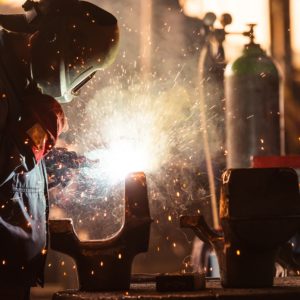The manufacturing sector has seen a sharp turnaround over the past year and is now one of the primary drivers of economic growth.
President Donald Trump has specifically addressed the plight of the manufacturing sector many times since first launching his campaign. His working-class-focused agenda sought to save traditional industries that have suffered in recent years. The National Association of Manufacturers (NAM) notes things have begun turning around.
The Bureau of Economic Analysis (BEA) released a report Thursday which found that durable goods manufacturing was one of the leading contributors to economic growth in the fourth quarter of 2017. The report found that output jumped 5.3 percent for manufacturers during that time.
“Just going back a year and a half or so, manufacturing was really struggling,” NAM chief economist Chad Moutray told InsideSources. “There was a lot of global headwinds and economic uncertainty in general. 2015 and 2016 were not that fabulous of years in terms of employment growth or even in terms of output growth.”
The Great Recession crippled manufacturing and other industries across the economy when it struck roughly a decade ago. The economy started showing significant improvements in recent years following an unusually slow economic recovery. Moutray notes that the manufacturing sector started to finally gain traction towards the end of 2016.
NAM has published a survey for the past two decades which highlights optimism levels among its members. The survey for the first quarter of this year showed that optimism levels for small manufacturers reached their highest point ever at 94.5 percent. The survey also found that 93.5 percent of members have a positive outlook of the economy.
“Manufacturers continue to be relatively upbeat,” Moutray said. “Certainly, tax reform and the overall business environment have helped including the regulatory changes that have taken place. But also the global economy looks a lot better. So as a result, when we asked our own members about their companies’ performance, they tended to be pretty positive. I think we’ve seen a big change in even just the last year.”
Moutray adds that employment remains an issue among members with how tight the pool of available workers has become. Manufacturers are looking to better attract and retain workers with the right skill sets. Manufacturing has changed significantly because of technology, with there being significantly more demand for high-skilled workers.
“I think we’re going to continue to see a lot of growth on the export side,” Moutray said. “The global economy is doing better, which is, obviously, helping overall exports. When you look at the sectors that have done well over the last year, it’s a lot of things like machinery, auto, metals, chemicals. We continue to see a lot of investment in the chemical space. I think we’re seeing some pretty broad gains in the manufacturing sector.”
The BEA report found that manufacturing and construction alongside professional, scientific, and technical services were the leading contributors to the 2.9 percent increase in economic growth in the fourth quarter of 2017. The Federal Reserve released data Tuesday which showed that manufacturing production has increased 3.0 percent over the year at the best year-over-year rate since June 2012.

